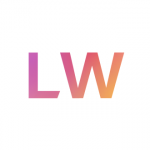UX Research | Stanford Life Design Lab
Sophomore Wayfinders Program
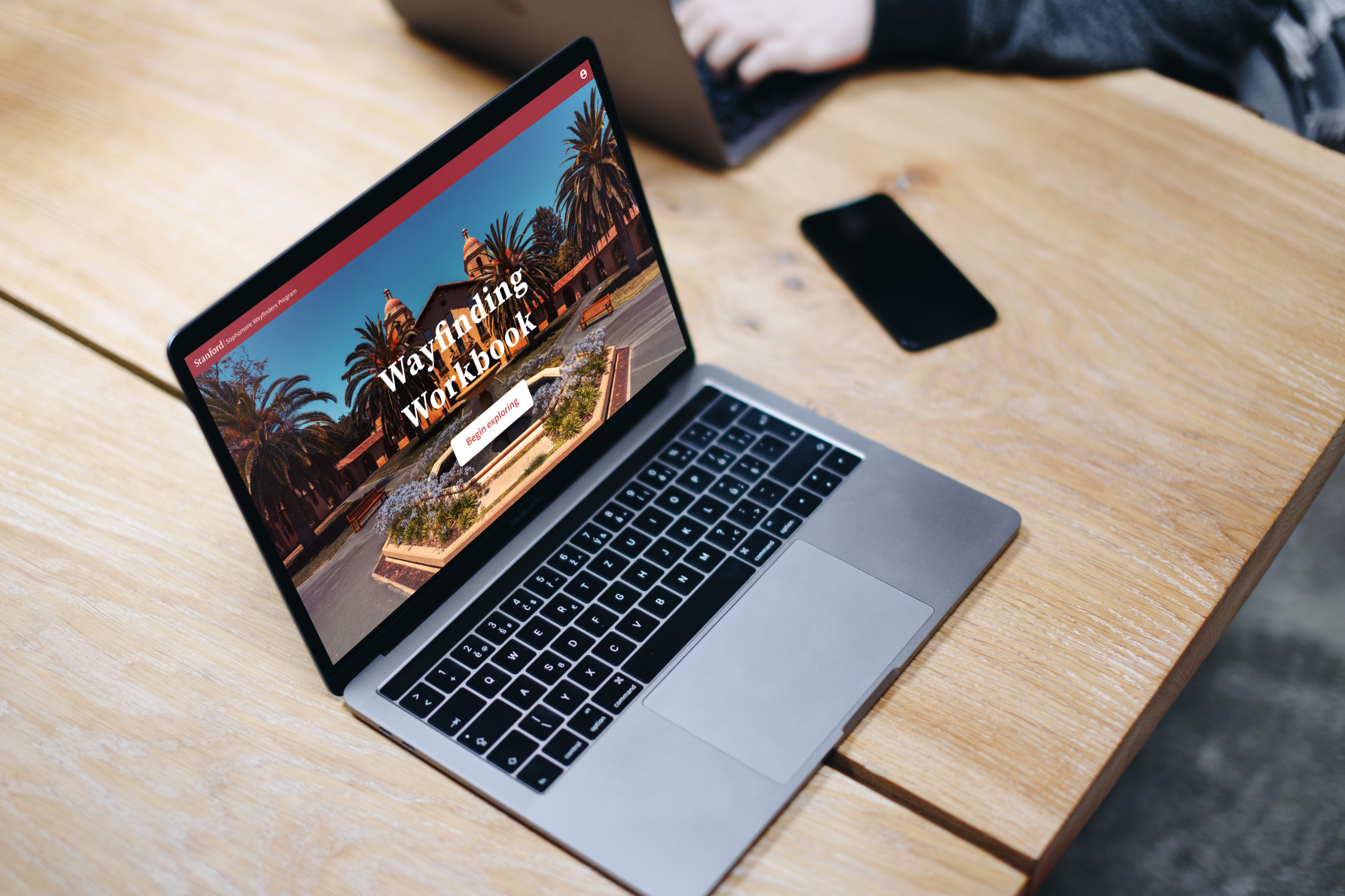
MY ROLE
UX Researcher
April – June 2021
Stanford, CA
TEAM
Kathy Davies | Managing Director of the Life Design Lab
Alice Petty | Director of the Sophomore Wayfinders Program
Alison Cabanday | Stanford ‘24
Thomas Escudero | Stanford ‘24
Sadorian Robertson | Stanford ‘24
AT A GLANCE
In a normal year, many students at Stanford struggle with finding their path, whether it’s choosing a major, preparing for careers, or joining student organizations. Due to the COVID-19 pandemic, incoming freshmen and sophomores face unique challenges with online learning, accessing resources, and feeling truly connected with the Stanford community.
We created Sophomore Wayfinders, a co-curricular program that helps incoming freshmen and sophomores better navigate the resources that Stanford has to offer.
This was a collaborative effort between:
- Stanford Life Design Lab
- BEAM (Bridging Education, Ambition, and Meaningful Work) career education center
- Academic Advising and VPUE (Vice Provost for Undergraduate Education)
The pilot will launch in Fall 2021. For more info, view the Sophomore Wayfinders program here.

UNDERSTANDING OUR USERS
Each team member conducted interviews with two fellow freshmen and completed empathy maps to capture each interviewee’s experience. We summarized each interviewee’s perspective in POV (Point Of View) statements.
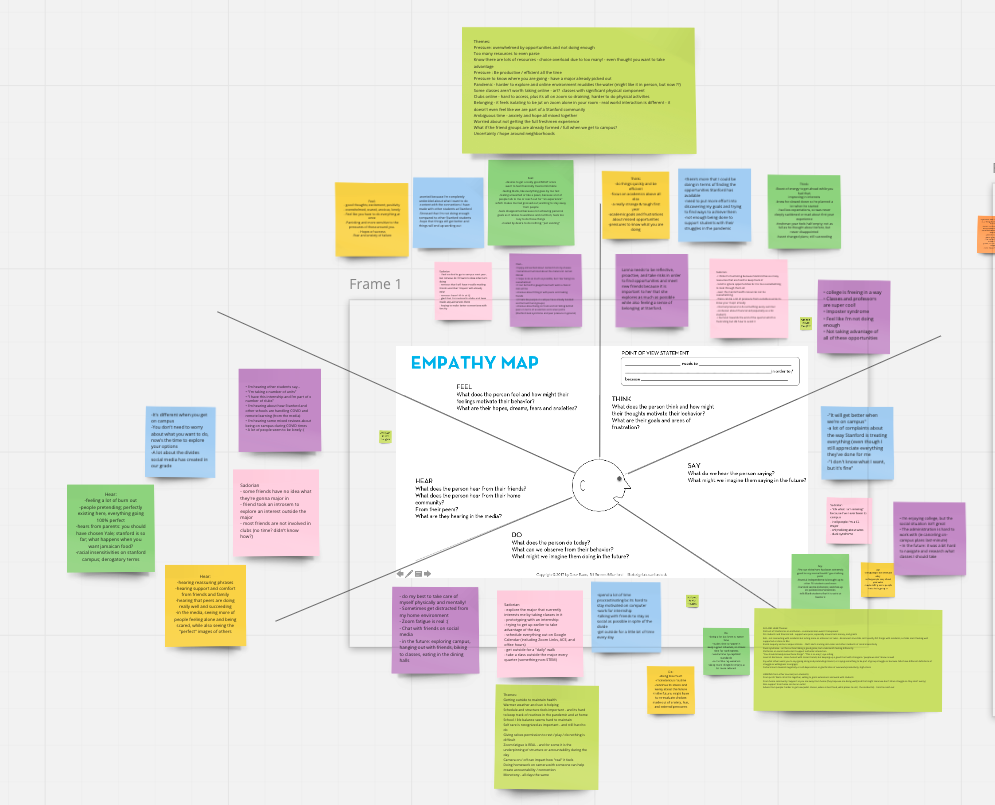
STANFORD DURING THE PANDEMIC
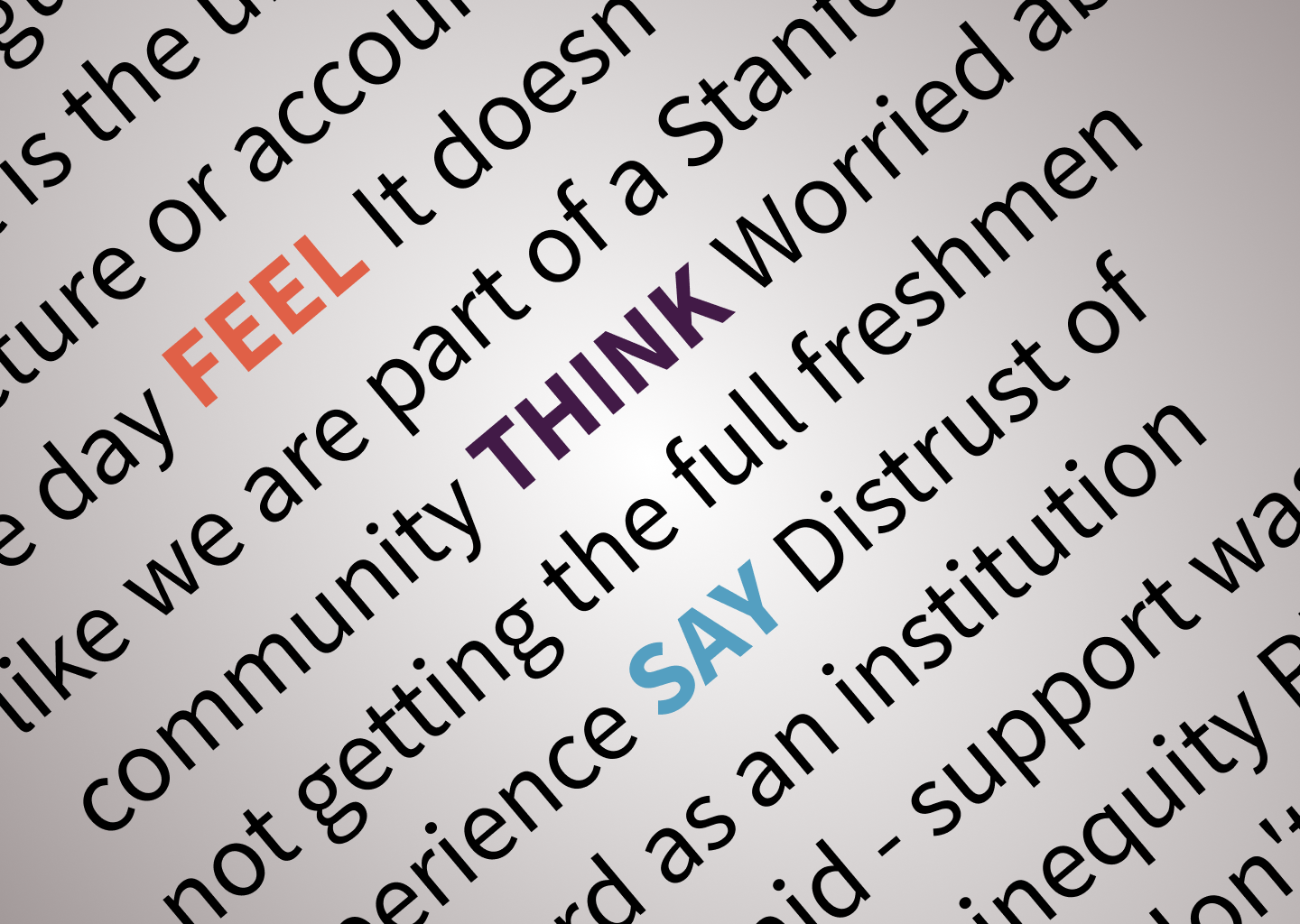
Key Takeaways
- Lack of community and authentic connections with peers/professors
- Pressure to be productive and know what you’re doing, glorification of overworking
- Duck syndrome
- Online college is monotonous, not engaging
THE WAYFINDING WORKBOOK
We wanted to create a consolidated hub to provide Stanford students with important resources in friendly, bite-sized chunks. Our goal is to provide a welcoming voice, help students find a sense of community, equip them with tools to prepare for their future, and reassure students that college is an ambiguous process.
FROM WORKBOOK TO WEBSITE
Before our team began working on the project, the existing prototype created by the Stanford Life Design Lab was a slide deck; the original intent was to produce copies of a physical workbook that students could flip through and write in. However, after considering the digital, hyperconnected lives of the student demographic, our team ultimately agreed upon a digital version (although we still lovingly called it a “workbook”).
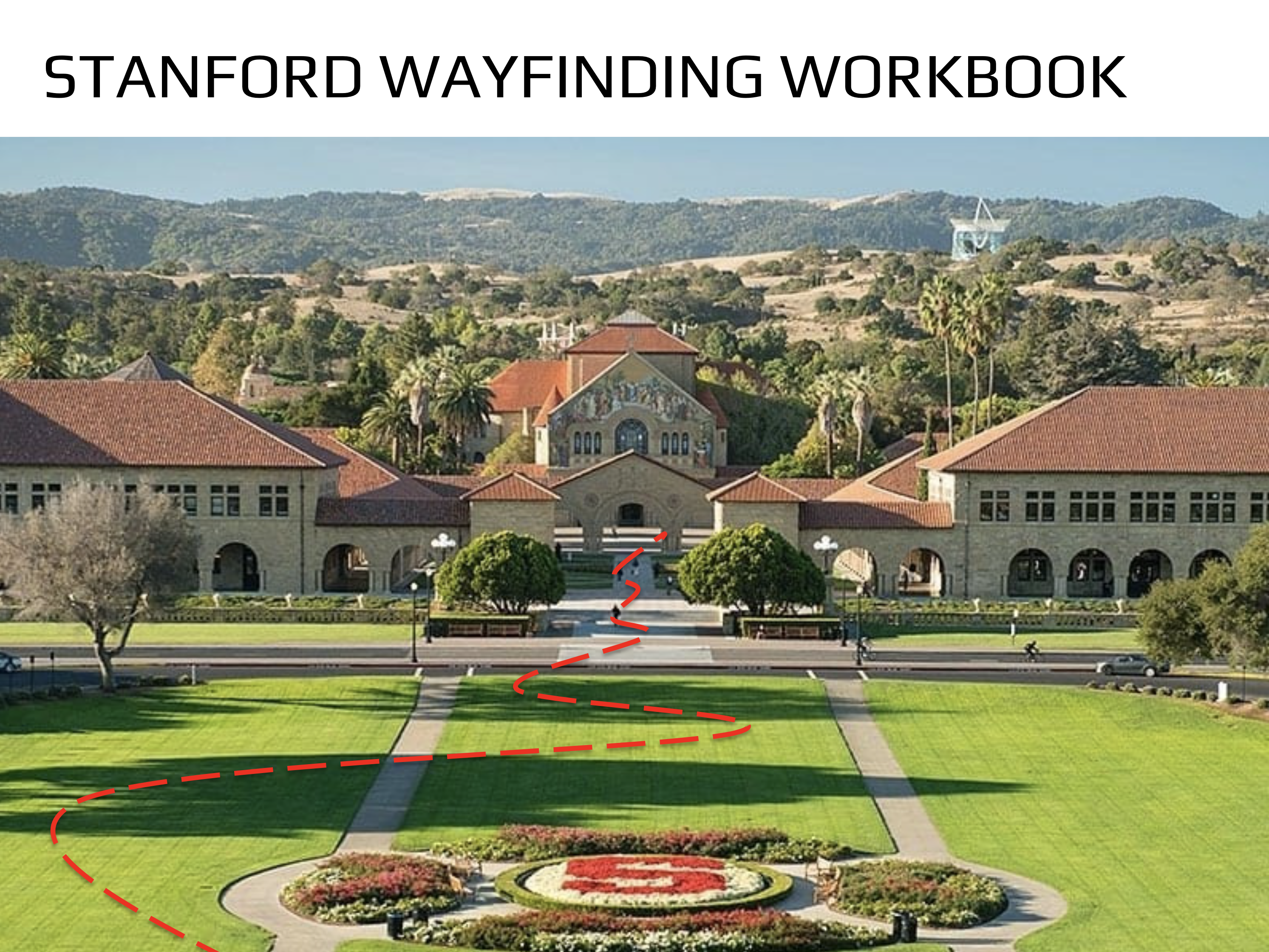
Our first iterations assumed that the final deliverable would be a website. Thus, we created sitemaps to organize our thoughts around what type of information should be included and how that information should be presented.
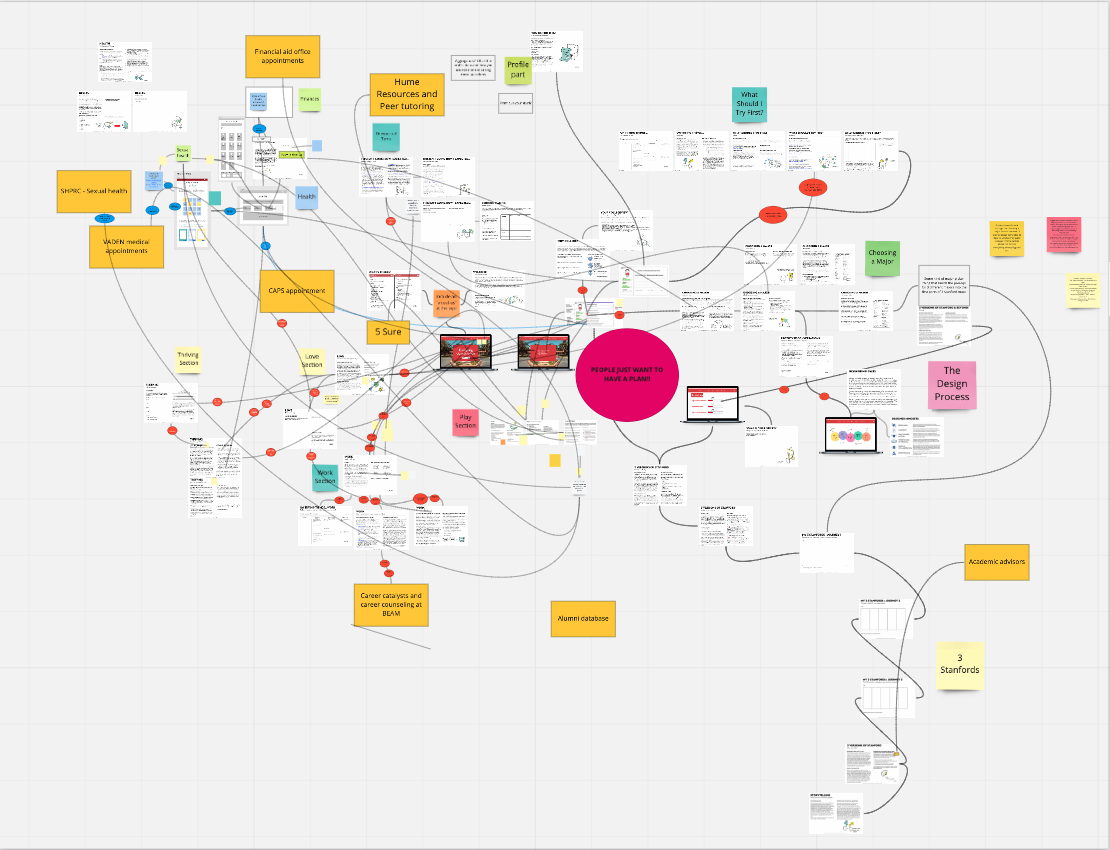
We soon realized that a critical pain point for most students is choosing a major.
As a result, we decided to focus on that area for prototyping and user testing. Each team member created a user flow and low-fidelity prototype (mine are shown below).
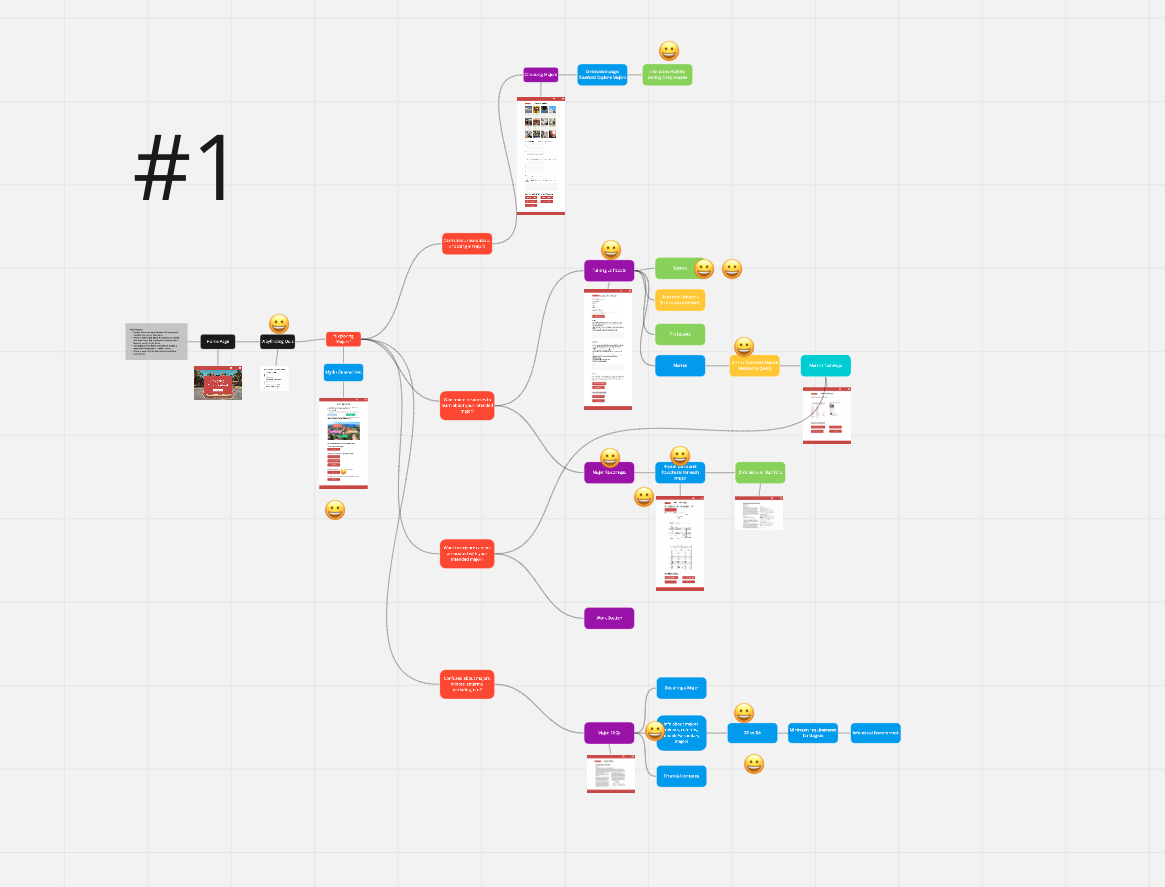
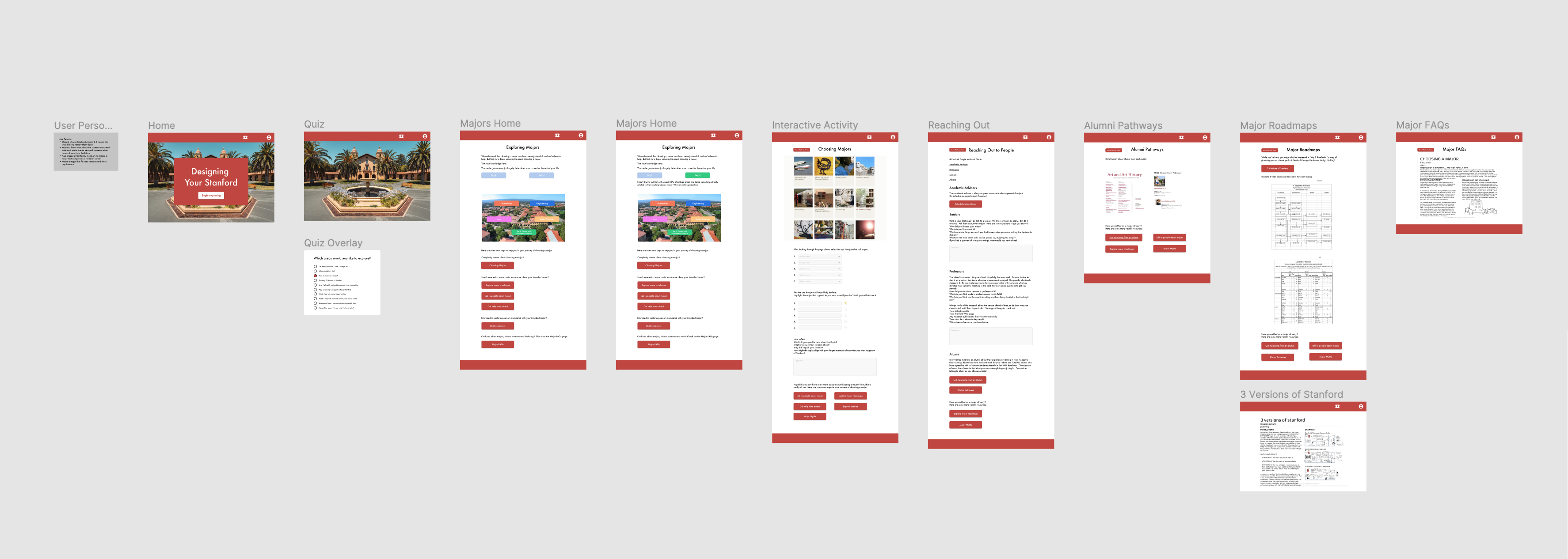
USER FEEDBACK
We conducted a focus group with 10 other freshmen to get their input on our prototypes for the “Choosing a Major” pathway.
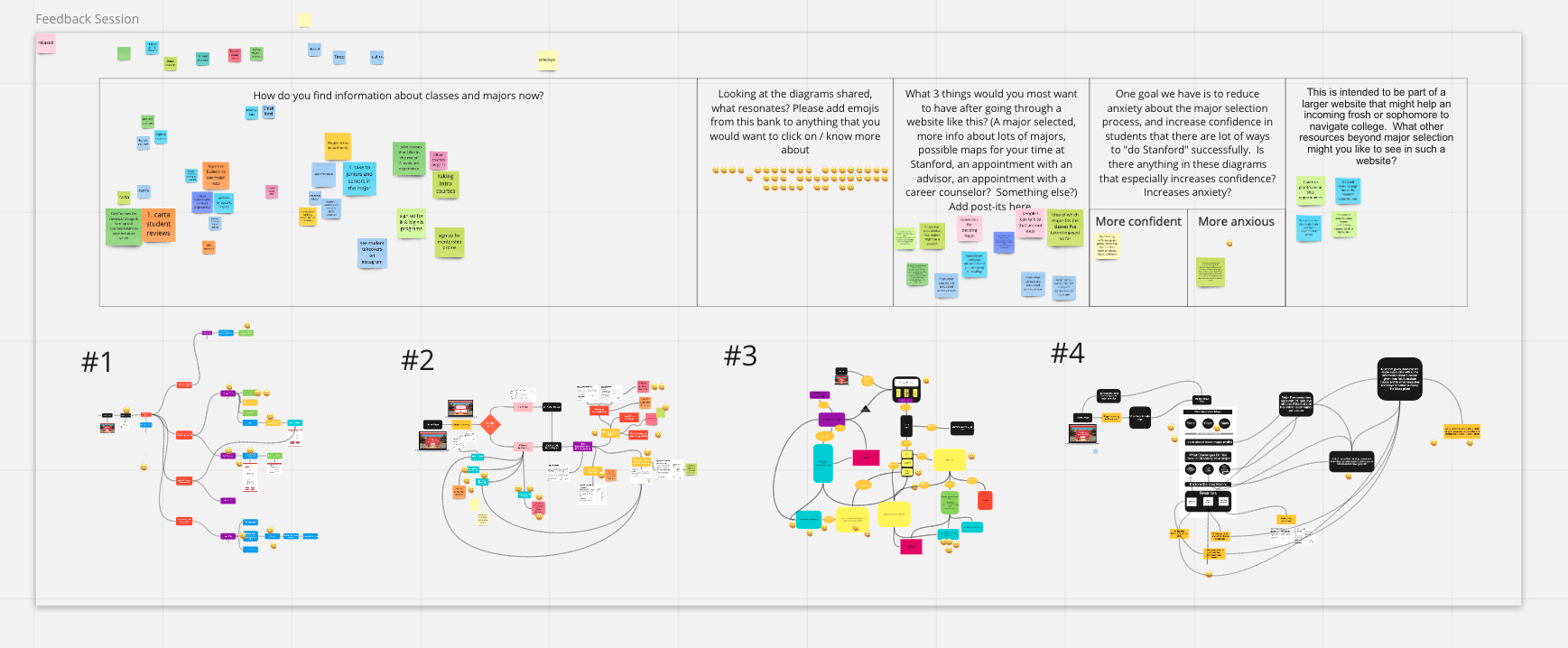
A FRESH CANVAS
Unfortunately, due to time and budget constraints from the Stanford administration, we turned to building a course page on Canvas instead of building a dedicated website. Although we were much more limited in terms of the visual design and interactivity of the page, we tried to use certain Canvas features to our advantage (such as using the “Quiz” feature for reflective activities and the “Discussion Forum” to enable conversations between students ).
*images of the final Canvas page have not been released yet*
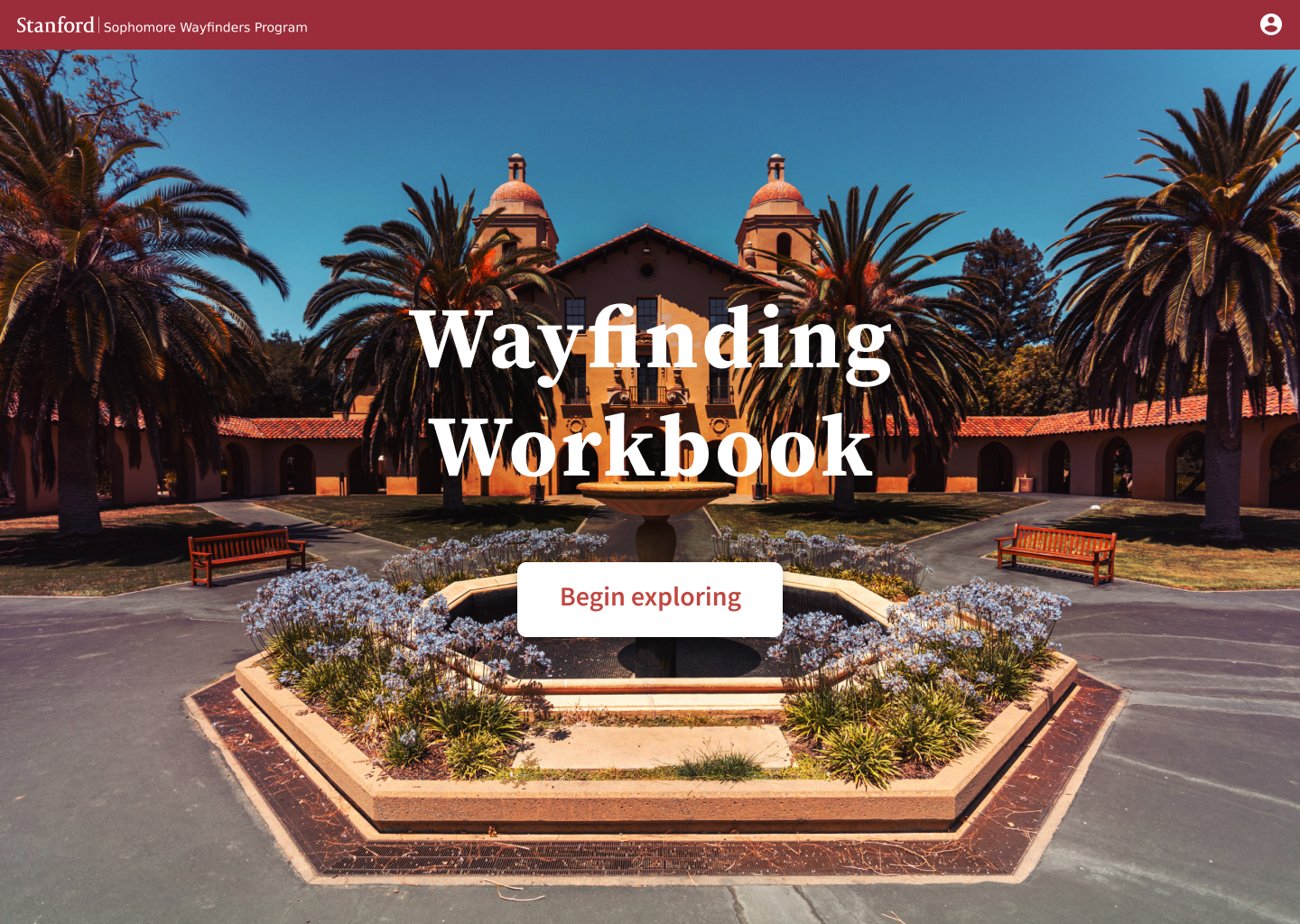
HOPES AND GOALS
At the end of spring quarter, we passed on the project to the Life Design Lab and Academic Advising to complete over the summer. For our upcoming launch in Fall 2021, we hope that the workbook will truly resonate with students who need guidance upon arriving at Stanford.
LEARNINGS
Users are diverse
It is difficult to account for the many diverse experiences of students in a single product. Even while trying to construct a logical flow for the “Choosing a Major” pathway, I found myself questioning which pieces of information would be most useful for various students.
Designers must be flexible
Design consists of continuous cycles of feedback and iteration. Everything is subject to change. Although I was disappointed that our work would not be implemented in our own website for fall 2021, I acknowledged the constraints and attempted to work within those boundaries.
The Value of Teamwork
I greatly enjoyed working with my team on this project. Getting feedback from my team members for every iteration was especially helpful in refining my prototypes. Collaboration now feels like an integral aspect of my personal design process.

